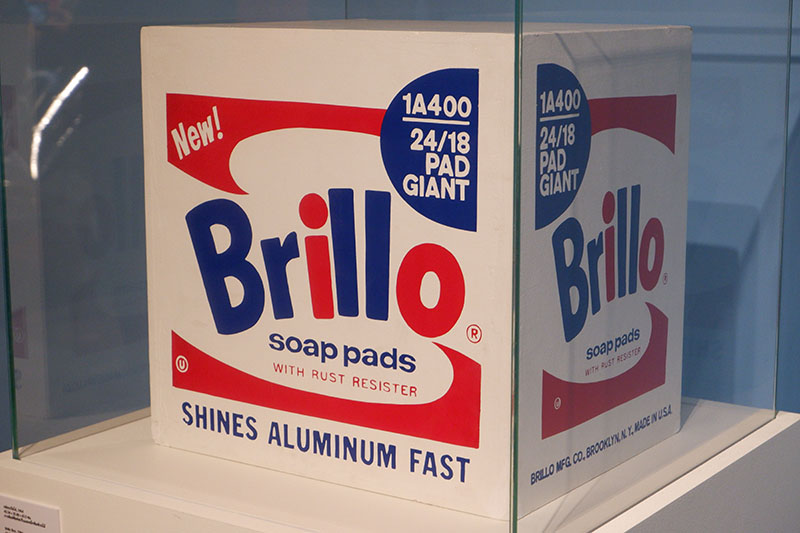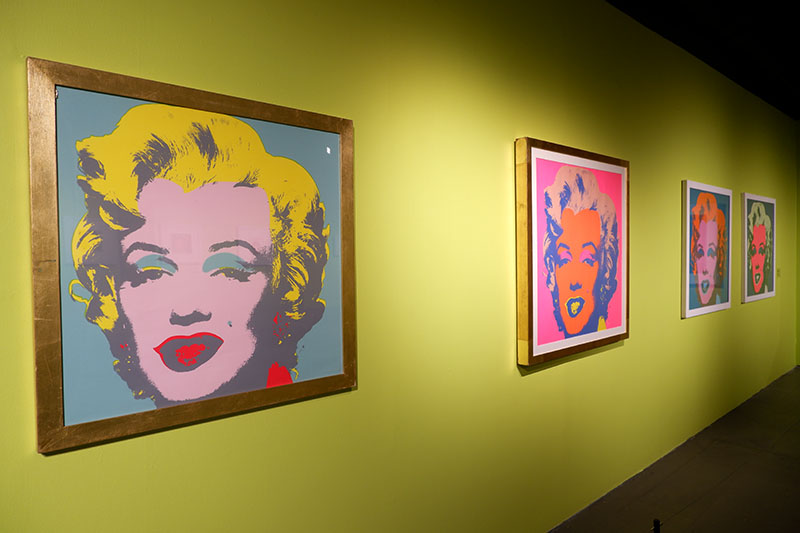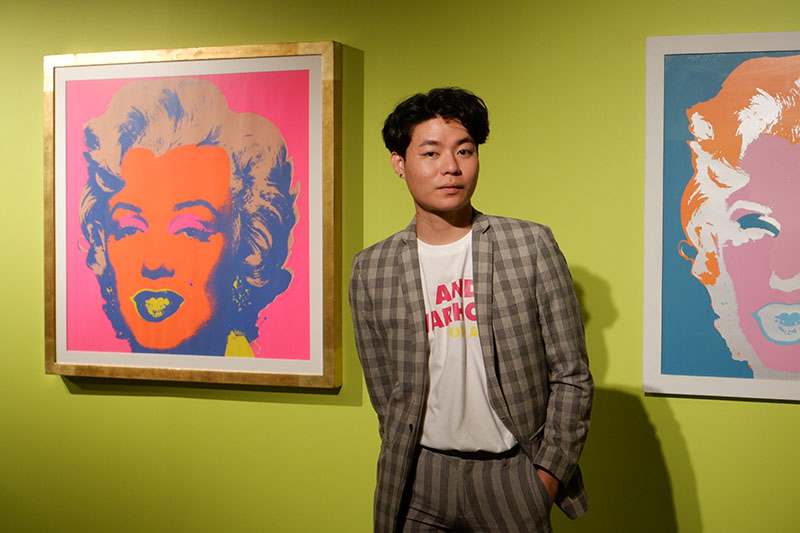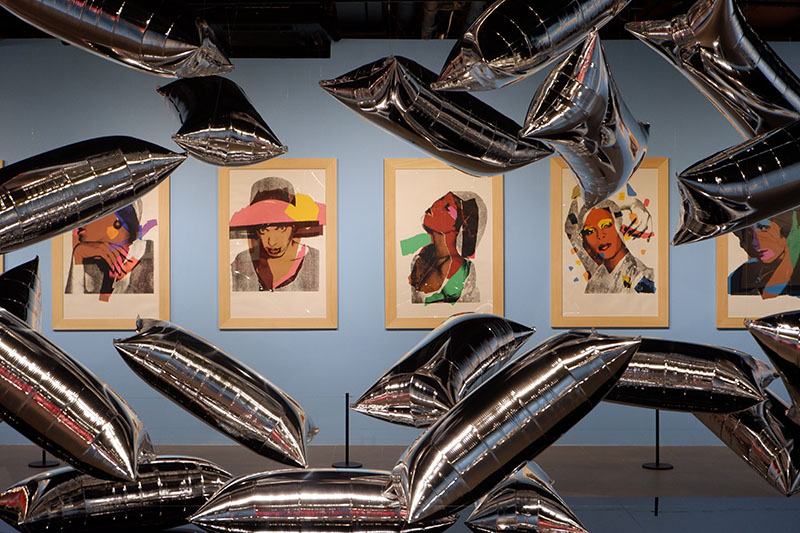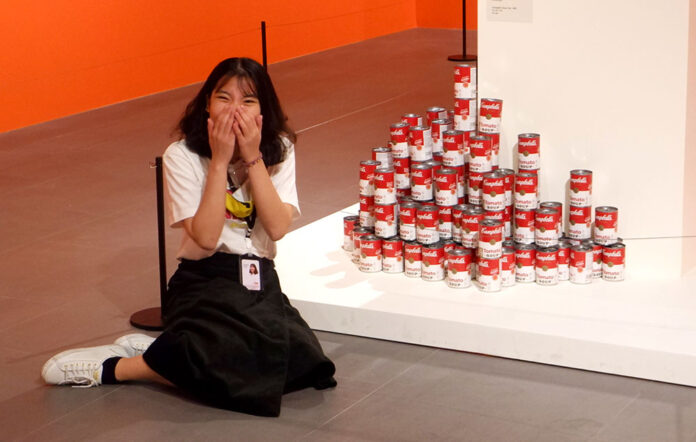
BANGKOK — The first-ever Andy Warhol exhibition in Thailand has come at an opportune time – blurring the lines between celebrity culture, products, politics, and art.
The “Andy Warhol: Pop Art” exhibition, which runs from Aug. 12 through Nov. 24, features 128 original Warhols owned by Italian collector Gianfranco Rosini on display at River City Bangkok.
Panu Boonpipattanapong, a Warhol enthusiast who helped curate the exhibition, said the Warhol philosophy – of making ordinary items in everyday life into art, and blurring the line between mass culture and high culture – is exactly the kind of egalitarian display Thailand needs right now.
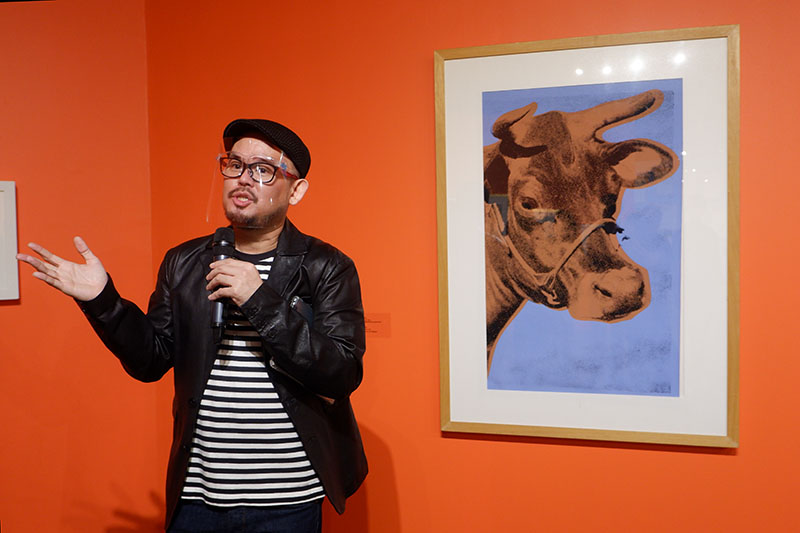
“Before, art was seen as something only for the educated and elite, while pop culture was seen as worthless,” Panu, who is also an art columnist for A Day magazine, said in an interview. “Warhol erased the line between everyday life and art, and made it accessible to all.”
Panu said he also wanted Thai people to see this first-ever exhibition of Warhols in Thailand because by its nature, Warhol’s art was democratic.
“He was very political and socially-aware, and his art could be quite sardonic and tongue-in-cheek,” he said. “Maybe he would’ve made art about the protests, since he was very aware about the importance of current events and did not want people to be indifferent to them.”
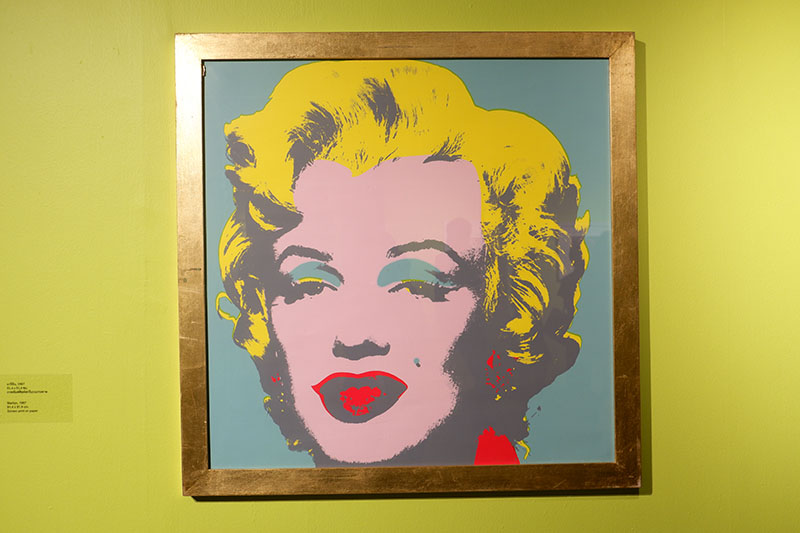
For example, Warhol made several silkscreens of an electric chair beginning in 1964 – his way of protesting death by electrocution, Panu said. Warhol also made the “Endangered Species” print series in 1983 of 10 endangered animals.
Panu gestured to the Velvet Underground 1971 vinyl cover designed by Warhol – which has a pair of lips drinking a bottle of Coca-Cola on it. In his autobiography, the artist had famously written:
“What’s great about this country is America started the tradition where the richest consumers buy essentially the same things as the poorest. You can be watching TV and see Coca-Cola, and you can know that the President drinks Coke, Liz Taylor drinks Coke, and just think, you can drink Coke, too. A Coke is a Coke and no amount of money can get you a better Coke than the one the bum on the corner is drinking.”
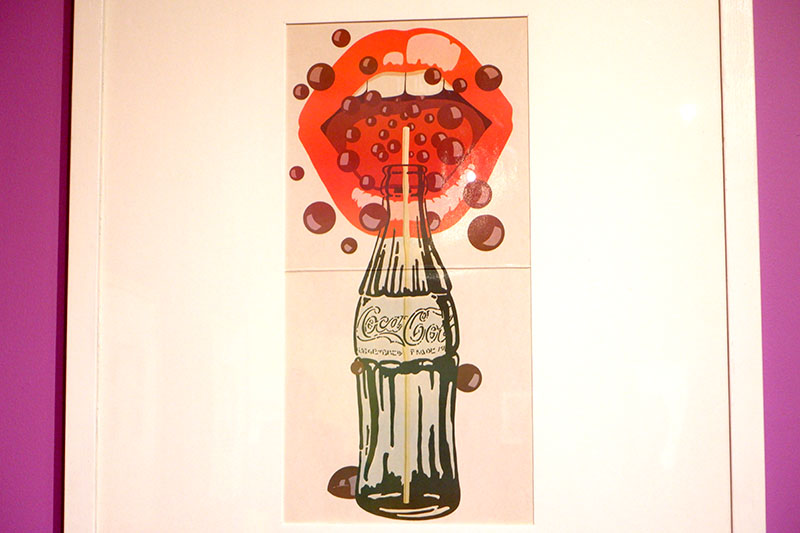
Coca-Cola’s “democracy” of course also extends to Warhol’s famous Campbell soup cans. Warhol, the son of impoverished immigrant parents from Slovakia, ate the soup almost everyday growing up in Pennsylvania.
At the exhibition are several signed soup cans and soup boxes from 1967. A 1966 soup can silk screened onto a shopping bag is startlingly neon, as well as a dizzyingly-patterned 1968 apron and even a pair of 1964 leather shoes.
Also on display is a Campbell’s Soup Dress from 1968, which Campbell created as a promotion due to the interest in their products created by Warhol. Anyone could send in two soup can labels and $1 to receive this paper dress.
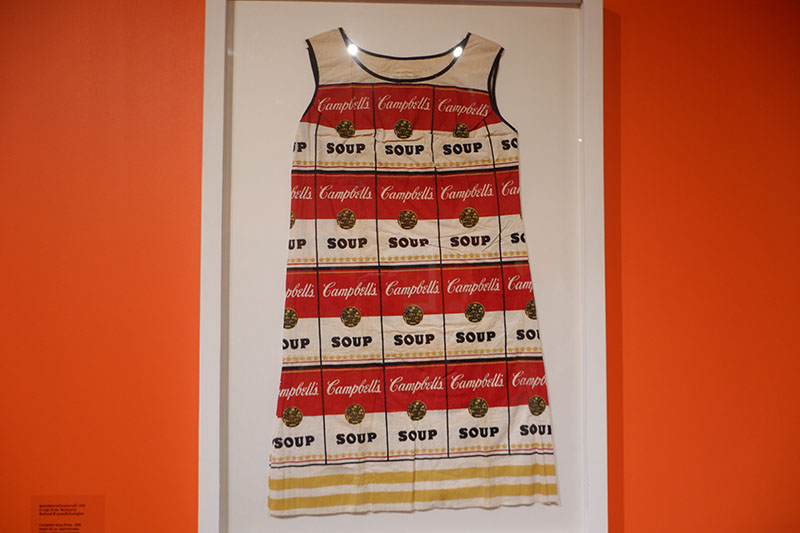
It’s the equivalent of those free marketing products that comes with sales promotions, but seen as art in later decades, Panu said.
“If he came to Thailand, he might make artwork of our water bottles, or sam mae krua brand sardines. He would definitely be ironic and understand the ‘pretentious, urban, hipster life’ vibe,” Panu said, using the Thai phrase ‘อยู่เมืองดัดจริต ชีวิตต้องป๊อป’ often used to poke fun at Bangkok urbanites.
The fact that the exhibition is held at a mall was also Warholian, Panu said.
“Some people might say ‘no’ to the fact that it’s in a mall, but that’s the kind of idea pop art wants to destroy. Art doesn’t have to just be in a museum. People can be shopping and stop by.”
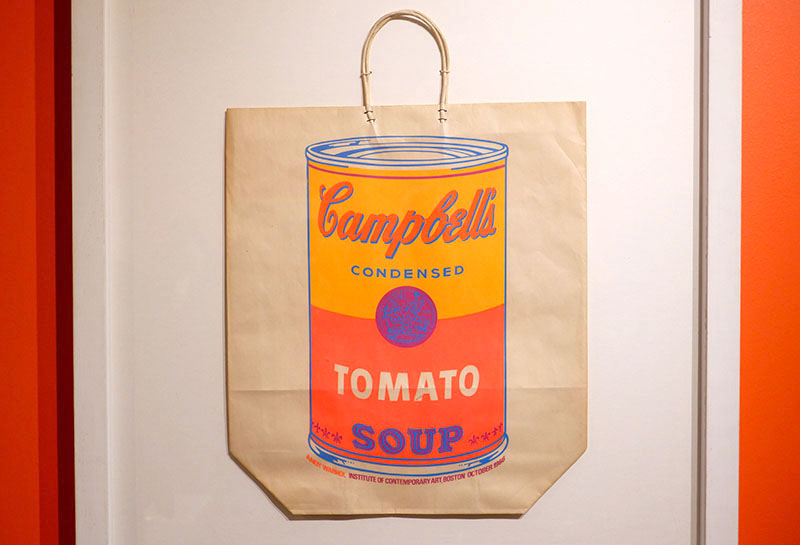
The exhibition is held in conjunction with the U.S. embassy, who will work with the National Association of the Deaf in Thailand to hold tours in Thai sign language for greater accessibility.
“Andy Warhol is a representative of the American dream,” Neal Murata, US Embassy cultural attache said. “He came from an immigrant background and made it by doing something he was passionate about.”
The “Andy Warhol: Pop Art” exhibition is open from 11am to 8pm on weekdays and 10am to 8pm on weekends and holidays. Tickets cost 400 baht and for adults and 300 baht for students and the elderly. Tickets can be bought at the RCB Gallery Shop at River City or on Ticketmelon.
